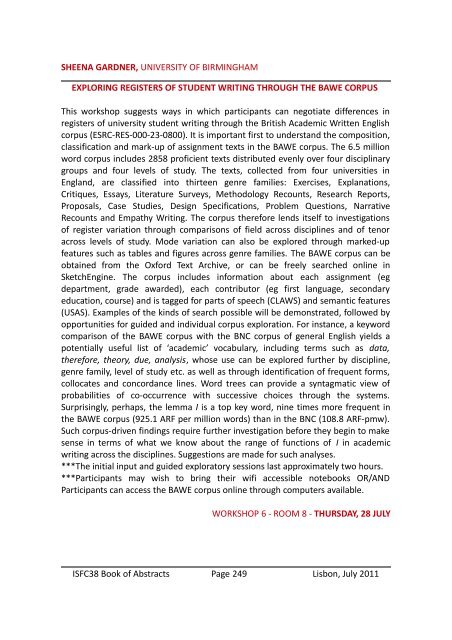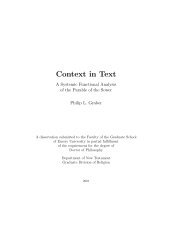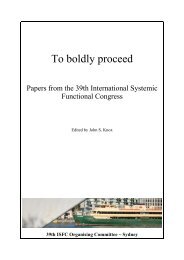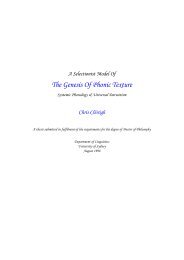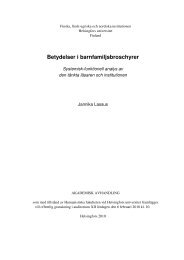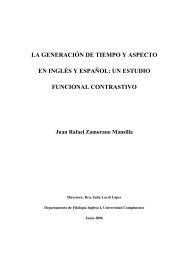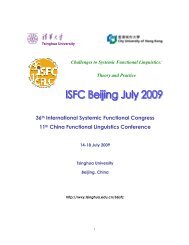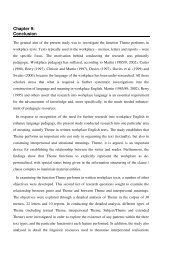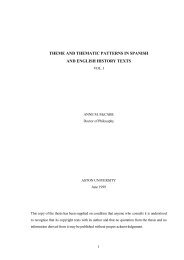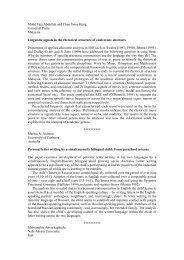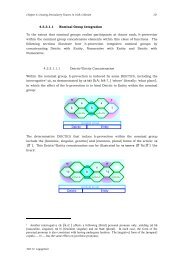Abstracts - Faculdade de Letras da Universidade de Lisboa
Abstracts - Faculdade de Letras da Universidade de Lisboa
Abstracts - Faculdade de Letras da Universidade de Lisboa
- No tags were found...
You also want an ePaper? Increase the reach of your titles
YUMPU automatically turns print PDFs into web optimized ePapers that Google loves.
SHEENA GARDNER, UNIVERSITY OF BIRMINGHAMEXPLORING REGISTERS OF STUDENT WRITING THROUGH THE BAWE CORPUSThis workshop suggests ways in which participants can negotiate differences inregisters of university stu<strong>de</strong>nt writing through the British Aca<strong>de</strong>mic Written Englishcorpus (ESRC-RES-000-23-0800). It is important first to un<strong>de</strong>rstand the composition,classification and mark-up of assignment texts in the BAWE corpus. The 6.5 millionword corpus inclu<strong>de</strong>s 2858 proficient texts distributed evenly over four disciplinarygroups and four levels of study. The texts, collected from four universities inEngland, are classified into thirteen genre families: Exercises, Explanations,Critiques, Essays, Literature Surveys, Methodology Recounts, Research Reports,Proposals, Case Studies, Design Specifications, Problem Questions, NarrativeRecounts and Empathy Writing. The corpus therefore lends itself to investigationsof register variation through comparisons of field across disciplines and of tenoracross levels of study. Mo<strong>de</strong> variation can also be explored through marked-upfeatures such as tables and figures across genre families. The BAWE corpus can beobtained from the Oxford Text Archive, or can be freely searched online inSketchEngine. The corpus inclu<strong>de</strong>s information about each assignment (eg<strong>de</strong>partment, gra<strong>de</strong> awar<strong>de</strong>d), each contributor (eg first language, secon<strong>da</strong>ryeducation, course) and is tagged for parts of speech (CLAWS) and semantic features(USAS). Examples of the kinds of search possible will be <strong>de</strong>monstrated, followed byopportunities for gui<strong>de</strong>d and individual corpus exploration. For instance, a keywordcomparison of the BAWE corpus with the BNC corpus of general English yields apotentially useful list of ‘aca<strong>de</strong>mic’ vocabulary, including terms such as <strong>da</strong>ta,therefore, theory, due, analysis, whose use can be explored further by discipline,genre family, level of study etc. as well as through i<strong>de</strong>ntification of frequent forms,collocates and concor<strong>da</strong>nce lines. Word trees can provi<strong>de</strong> a syntagmatic view ofprobabilities of co-occurrence with successive choices through the systems.Surprisingly, perhaps, the lemma I is a top key word, nine times more frequent inthe BAWE corpus (925.1 ARF per million words) than in the BNC (108.8 ARF-pmw).Such corpus-driven findings require further investigation before they begin to makesense in terms of what we know about the range of functions of I in aca<strong>de</strong>micwriting across the disciplines. Suggestions are ma<strong>de</strong> for such analyses.***The initial input and gui<strong>de</strong>d exploratory sessions last approximately two hours.***Participants may wish to bring their wifi accessible notebooks OR/ANDParticipants can access the BAWE corpus online through computers available.WORKSHOP 6 - ROOM 8 - THURSDAY, 28 JULYISFC38 Book of <strong>Abstracts</strong> Page 249 Lisbon, July 2011


